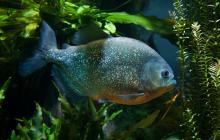English
What causes entire branches of Russian-olive trees to die back?
What can be done to save them?
The diseases that cause gradual dieback of Russian-olive trees (Elaeagnus angustifolia) are often caused by fungi.
The most common disease is verticillium wilt, caused by fungi that live in the soil (Verticillium albo-atrum, Verticillium dahliae). They invade the tree through wounds in the roots and are then carried by the sap through the entire vascular system. They gradually block the conductive vessels and cause the leaves to wilt suddenly; the twigs and branches then dry out.
If in doubt: strip the bark from an infected branch and check for long greenish or brownish streaks in the sapwood; in cross-section, the streaks form shadows or dots on the growth rings.
What to do?
- Plant your Russian-olive tree in light, well-drained soil.
- Keep it healthy by giving it balanced fertilizer.
- Prune off any dead or diseased branches. Disinfect your pruning tools between each cut with rubbing alcohol.
- Dig out and destroy any seriously affected trees.
- Don't replant a Russian-olive in the same place!






